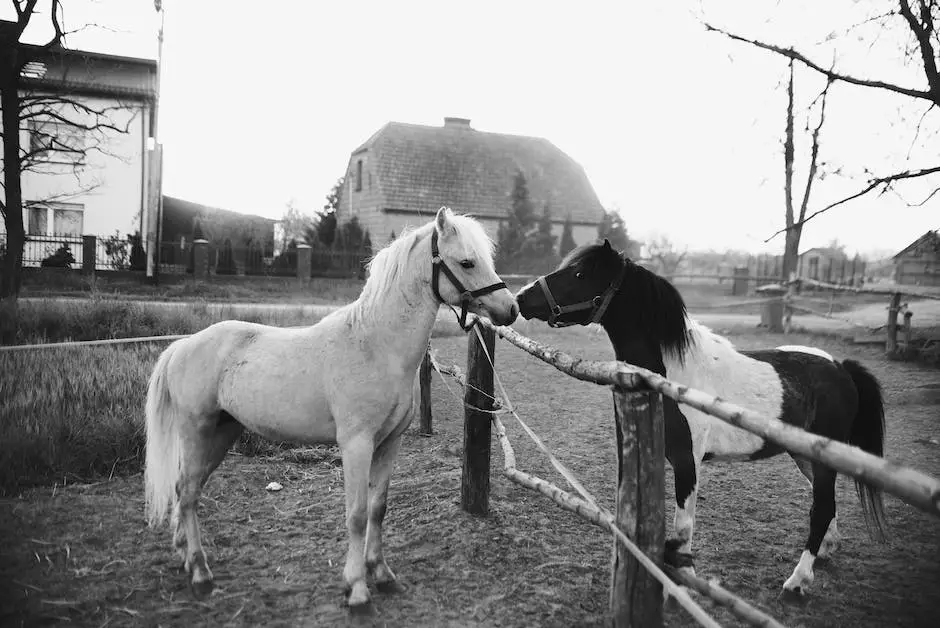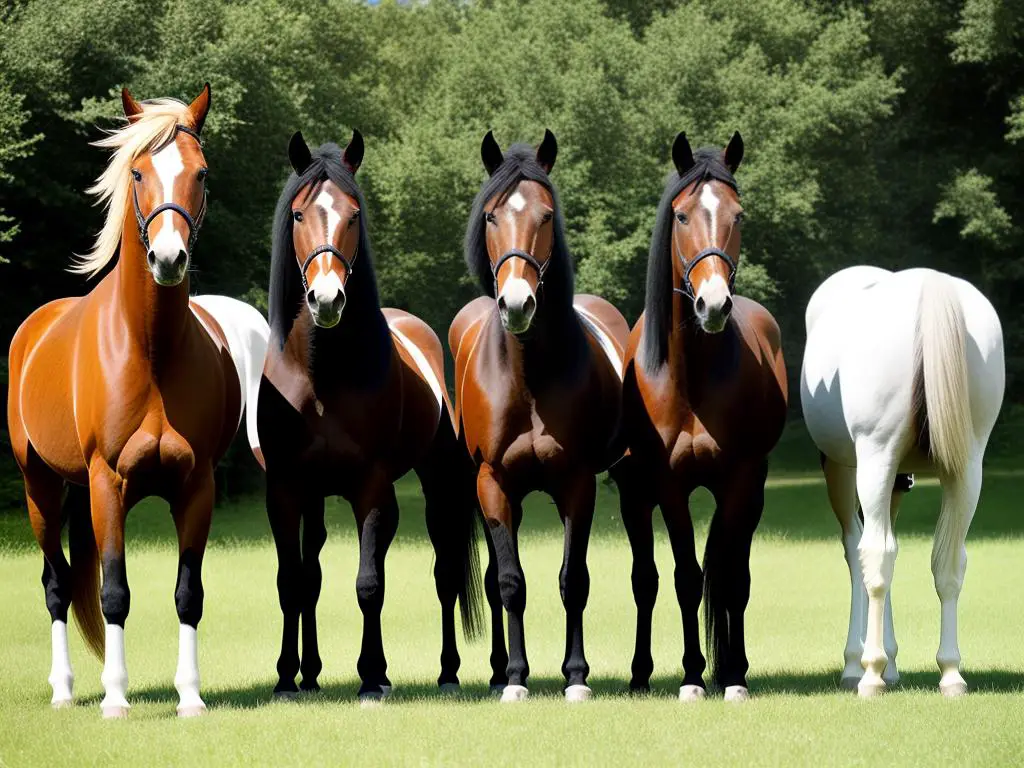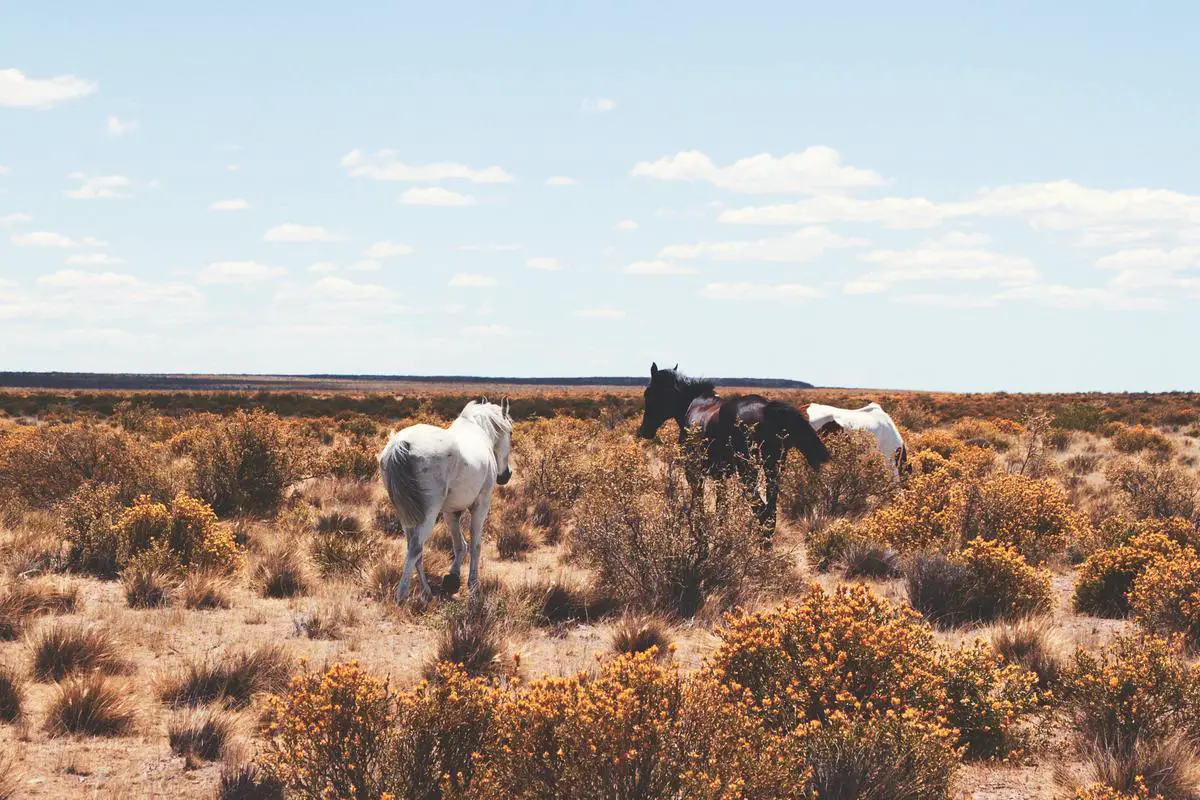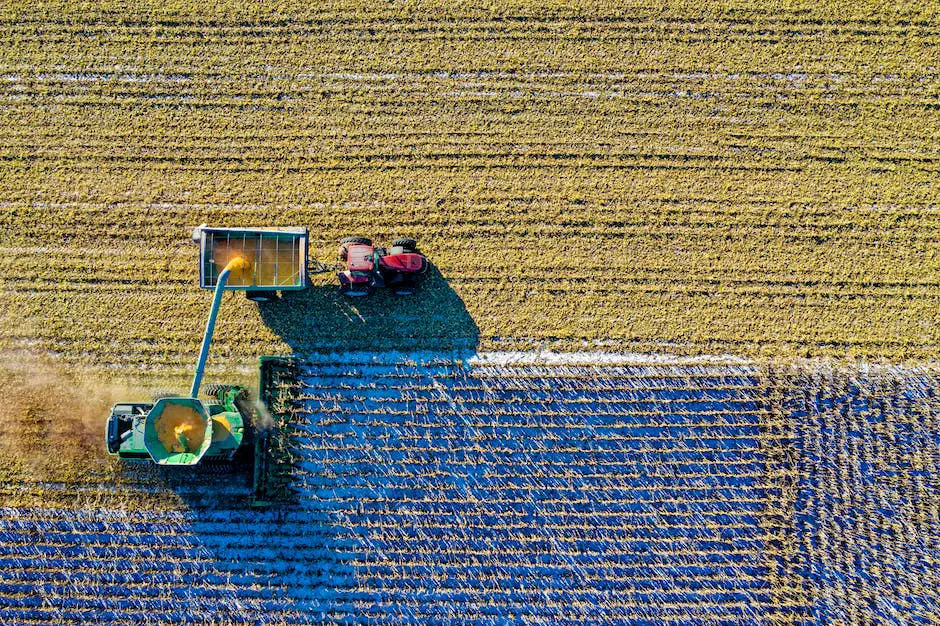Delving into the incredible world of draft horses, magnificently robust breeds sculpted by history and nature, opens our eyes to a versatile family of equines that continues to serve and inspire humanity. Originating from different countries and terrains, each breed carries its unique history, characteristics, and purpose, which blend to create a tapestry of talents and traits. Whether pulling heavy loads in agricultural fields, gracing show rings, or adding heft to therapy sessions, these gentle giants make their presence felt across the spectrum of human activities. This exploration into draft horse breeds aims to guide one through the key attributes, historical significance, practical roles and the care needs of these powerful horses, providing a comprehensive understanding of this wonderful collection of equine classes.
Table of Contents (Horspedia)
Overview of Draft Horse Breeds
Belgian Draft Horse: The Gentle Giant
The Belgian draft horse, hailing from the Brabant region of modern Belgium, is one of the most heavy-set draft breeds, often weighing in at over 2,000 pounds. They are typically bay or chestnut in color, though roan and gray variations can also occur. Renowned for their robust build, they have large heads, short necks, and strong muscular bodies. Despite their imposing size, Belgian Drafts are known for their gentle and docile nature, making them excellent work horses.
Percheron – Elegance and Power Combined
The Percheron originally hails from the Huisne river valley in France, from which its name derives. Percherons are often black or gray in color, known for their muscular build and elegant graceful movements. They can weight between 1,800 and 2,600 pounds and are versatile, utilised for both farm work and pulling coaches. Known for their intelligence and willingness to work, they’ve also gained popularity in dressage and show jumping competitions.
Clydesdale – The Feathered Showstopper
The Clydesdale originated in Scotland and are perhaps best known for their appearances in Budweiser commercials. They range from 1,800 to 2,200 pounds, and are closely identified by their high stepping gait and feathered fetlocks. Clydesdales have an array of color patterns, but bay with white markings is most common. Despite their size and strength, they’re known for their extremely friendly and outgoing nature.
Shire: The Tallest Draft Breed
The Shire breed hails from England, known to be one of the tallest draft breeds, occasionally exceeding 19 hands high. Variations of black, brown, bay, and gray are common coat colors. They are characterized by their long feathered legs, large hooves, and muscular build, with adult males often weighing over a ton. Shires, aside from heavy haulage work, historically served as war horses due to their unyielding strength and endurance.
Suffolk Punch: The Oldest Breed of Heavy Horses
Known to be one of the oldest breeds of heavy horses, the Suffolk Punch originated in Suffolk, England. The name ‘Punch’ is thought to describe their solid, stout appearance. They’re always chestnut in color, ranging from dark to light shades. Unlike other draft breeds, they don’t have feathering on their legs. Suffolk Punch horses are valued for their ability to thrive on local fodder, their hardy nature, and their willingness to work.
When examining the multiple draft horse breeds out there, we can see a diverse range of origins, attributes, and demeanor. While each breed shares the fundamental characteristic of being a working horse – highly valued for their endurance and muscular strength – they each have unique qualities and temperaments that perfectly tailor them for different types of labor and horse-related sports, thereby contributing to the splendid variety within the equine universe.

Detailed Analysis of Each Breed
The Clydesdale: An Iconic Breed from Scotland
Named after Scotland’s River Clyde and the surrounding valley, the Clydesdale breed has its roots deeply embedded in Scottish heritage. Initially bred for agricultural usage and coal mining, these dynamic horses are easily recognized by their bay color, which is a rich reddish-brown, coupled with a white muzzle, lower legs, and an abundance of feathering around their ankles that make for a beautiful sight.
Clydesdales typically weigh between 1,800 and 2,000 pounds, and stand approximately 64 to 72 inches tall. Their bodies are robust and muscular, leading the eye to a gracefully arched neck and a broad forehead that accentuates their large, expressive eyes. An iconic symbol of the Anheuser-Busch Brewing Company, these horses are best known for their flamboyant participation in the Budweiser Clydesdale parades.
With their famously calm temperament, Clydesdales are often affectionately referred to as ‘gentle giants’. Their eager-to-please attitude and high trainability make them an ideal choice for a vast range of functions, whether it be pulling heavy loads or participating in various riding disciplines.
Belgian Draft Horse: The Gentle European Workhorse
Originally from the Brabant region of modern Belgium, the Belgian draft horse is one of the strongest and heaviest of draft breeds. They typically come in solid colors such as chestnut and bay. Belgians generally weigh between 1,800 and 2,200 pounds with a height of 64-68 inches.
They have a large, well-muscled build with a broad chest and powerful hindquarters. The heads of Belgian draft horses are relatively small and squared, with a straight profile and kind, expressive eyes. Their strength and stamina were utilized in World War I to transport heavy artillery.
Though their size might be intimidating, Belgian draft horses have a calm and gentle nature. They excel in farm work, logging, and under the harness in both riding and driving disciplines.
Shire Horse: The British Giant
The Shire horse is an English breed, domesticated since the Roman era for war, farm work, and freight hauling. They hold records for both height and weight among horse breeds. Weighing between 2,000-2,400 pounds, Shires can grow over 72 inches tall.
Their colors range from black, bay, brown, and grey, with considerable feathering on their lower legs. Shires also have a distinguishing roman nose, large, clear eyes, and long ears. They gained popularity due to their use in pulling brewery wagons loaded with beer barrels in pre-automobile eras.
The Shire breed is known for its mild-mannered temperament, intelligence, and willingness to work. Their hardiness and power make them highly suitable for many equine purposes, including riding, jumping, and pulling loads.
Percheron: A French Icon Dressed in Grey and Black
The Percheron horse breed, whose roots trace back to the Huisne River Valley in France, derives its name from the erstwhile province of Perche. Generally, their coat is either black or gray, and they can weigh anywhere between 1,100 and 2,600 pounds, with a typical height that falls between 58 and 72 inches.
Percherons are strong, sturdy animals with muscular legs and a wide back, supported by a thick, powerful neck crowned with a proudly carried head. One striking feature of these horses is their clean-cut head which bears a striking resemblance to an Arabian horse, complete with expressive, intelligent eyes. Their historical role as warriors in French medieval battles and as reliable means of urban transportation is a testament to their strength and resilience.
Known for their sprightly trotting gait, outstanding intelligence, and dedication to whatever tasks they are given, Percherons are incredibly versatile and are utilized in various fields like farming, logging, as riding horses, and carriage horses. Their stamina and dedication make them a prized asset in a multitude of working scenarios.

Practical Applications and Uses
Draft Horses: Harnessing the Power of Diversity
Draft horse breeds offer an impressive diversity of shapes, colors, and sizes, each excelling in their unique roles and capabilities. They’ve been instrumental throughout history, offering their strength and skills in areas such as agriculture, war, public transportation, forestry, and even industry. Let’s delve into an exploration of their versatility and practical use to understand these remarkable breeds better.
Agricultural Use
Almost all draft horse breeds have been used in agricultural activities for centuries. Originally bred for their size and strength, they were tasked with plowing fields, pulling heavy loads, and working tirelessly for long hours. Breeds like the Clydesdale, Belgian, and Percheron are renowned for their abilities in the field. Their endurance, power, and willingness to work remain unmatched to this day, enabling farm operations to run smoother.
Use in Forestry
In forestry, too, draft horses have found their calling. Hard-working breeds like the Ardennes and Brabant are known for their ability to move heavy logs in timber extraction operations. They have an edge in forestry compared to machinery because of their size, which enables them to maneuver through dense forests with less environmental impact.
Role in War
When it comes to warfare, the Shire breed is a standout, as it was historically used as a warhorse due to its large size and immense power. Shires were frequently used to carry heavily armored knights into battle.
Pleasure Riding and Show Horses
While draft horses aren’t typically the first choice for pleasure riding owing to their large size and slower gaits, breeds such as the Friesian and Gypsy Vanner are popular choices for parade and show purposes. Their elegant looks, combined with relaxed and comfortable gaits, make them eye-catching horses for pleasure driving and parading.
Therapy Animals
Draft horses also make exceptional therapy animals, thanks to their calm and patient temperaments. The gentle nature of the North Swedish and Haflinger breeds, for instance, makes them ideal for interacting with people dealing with physical, mental, and emotional challenges.
An Overview of Draft Horse Breeds’ Versatility
In the world of draft horse breeds, variety and diversity abound. These horses, famed for their unmatched strength and endurance, find utility in numerous applications—ranging from agriculture and forestry operations, historical war reenactments, leisurely riding, to therapy sessions. The consistency with which they perform, even under harsh conditions such as dense forests or tumultuous parades, speaks volumes about their valuable versatility.

Photo by luthiabags on Unsplash
Comparison and Contrast
Delineating the Traits of Draft Horse Breeds
Often known as draught or dray horses, draft horse breeds are characterized by their considerable power and stamina, making them ideal for heavy-duty tasks like plowing and hauling. Despite sharing this hardiness, distinct characteristics set each breed apart. By understanding these unique traits, anyone seeking to own a draft horse can make an informed selection suitable for their specific requirements.
Shire Horses
Shire Horses are one of the tallest draft horse breeds, with males standing up to 17.2 hands high. They are famously known for their feathering – long, fringed hair around their hooves, high energy levels, and good-natured temperament. Shires had been used as war horses in the Middle Ages due to their strength and size. They are black, bay, or grey in color.
Belgian Draft Horses
Belgian Draft horses are among the most popular breeds in the United States. They are a bit shorter than Shire Horses with heights varying between 16.2 to 17 hands. Recognized for their muscular build and square physique, Belgians are also usually calm and friendly. Their hair is light and they lack the heavy feathering of Shires. Belgians come in various shades of chestnut and roan and traditionally had a flaxen mane and tail but recent preference has become bay or dark.
Clydesdale Horses
Clydesdale Horses are known world-wide, largely thanks to their association with the Budweiser beer company. They are famous for their high-stepping gait and abundant feathering. These horses typically stand between 16 to 18 hands high. Clydesdales come in various colors, but bay and brown are the most common. These horses are intelligent, make excellent work horses, but can also be seen in shows and parades due to their eye-catching appearance.
Percheron Horses
Percheron Horses originate from France and typically stand between 15 and 19 hands high. They have minimal feathering, similar to the Belgian horses. Known for their intelligence and willingness to work, Percherons are often found working in agriculture or as carriage horses. They were originally bred for use in warfare, and this military history has contributed to their solid, muscular build. Percherons are usually gray or black in color.
Differentiating Between Draft Horse Breeds
When examining four notable draft horse breeds – Shire, Clydesdale, Belgian, and Percheron – there exist engaging similarities and differences to perceive. Shire and Clydesdale breeds, adorned with prominent feathering, are often recognized for their historical contributions to warfare thanks to their commanding presence and strength. On the other hand, Belgian and Percheron horses, with their minimal feathering, have been indispensable in agricultural scenarios due to their impressive strength.
One of the most noticeable differences is their relative heights. Shire and Clydesdale horses usually tower over the slightly shorter Belgian and Percheron breeds. Irrespective of their height, all of these breeds are universally applauded for enduring stamina and power.
Furthermore, their coat colors provide an enticing contrast. Although there’s a range of colors seen in these breeds, Percherons usually display black or grey coats, while Belgians primarily flaunt shades from chestnut to roan.
When selecting a draft horse breed, future owners should reflect on various factors, including physical traits like feathering and color, along with the unique strengths of each breed and how they align with the intended usage of the horse.

Care and Maintenance
Essential Daily Care for Draft Horses
Draft horses are noticeably larger compared to many other breeds, demanding a substantial dedication of time and care. Such care encompasses daily needs like grooming, hoof maintenance, and fitness activities, all of which should be customized considering the peculiar requirements of each breed. Draft horses, such as Clydesdales, notably demand more grooming efforts due to their feathered legs, which are prone to tangling and accumulating dirt.
Diet and Nutrition
The diet of the draft horse like Belgian, Clydesdale, and Shire, typically consists of hay, grains, and occasional fruits and vegetables for treats. They require a high-fiber diet and plenty of clean, fresh water to maintain their health and energy levels. Draft horses are also more prone to obesity than other breeds, meaning their diet must be carefully monitored. They may require more nutrients in their diet due to their large size, but this doesn’t necessarily mean they eat significantly more than smaller breeds.
Health Concerns
Draft horses are susceptible to a number of health issues, similar to other horse breeds. However, they also face breed-specific ailments. For instance, Clydesdales and Shires, with feathered legs, are prone to skin infections or conditions known as “scratches” or “mud fever.” Draft horses have a higher occurrence of Equine Metabolic Syndrome (EMS), a disorder related to obesity and insulin resistance. Also, issues such as laminitis or problems related to their immense size, like a higher risk of developing joint issues, are also seen.
Breed-Specific Maintenance
While there are typical care requirements shared amongst the draft horse family, different draft horse breeds require slightly different maintenance strategies. The Belgians are known for their solid build and calm temperament but can gain weight easily. The owners need to carefully manage their diet and routinely monitor their weight. Clydesdales, known for their large size and high stepping gate, have substantial feathering on their legs that need detailed care to avoid any skin conditions. The Percheron horse breed is known to thrive in various climates, and thus may require a custom care package depending upon the weather conditions.
Shelter and Space Requirements
Draft horses require spacious shelters and plenty of room to move around. As heavy workers, they need a great deal of exercise and space to prevent obesity and to encourage healthy musculoskeletal growth. As a general rule, the larger the horse, the more space it needs for roaming and exercise.
Understanding the Commitment
Keeping draft horses is a substantial commitment, both in terms of time and resources. They are large animals with specialized needs and daily requirements that can’t be compromised. Proper veterinary care, suitable living conditions, a well-rounded diet, and daily exercise are just a few of the commitments required by draft horse breed owners. However, their gentle nature, sheer size, and raw power make them a joy to care for those who can fulfill the necessary obligations. This understanding further makes it imperative for current and prospective owners to understand these creatures’ needs better.

After exploring the majestic world of draft horse breeds, their rich history, unique traits, and practical uses, it becomes clear that each breed brings its own charm and utility. While these breeds vary in their size, color, temperament, and purpose, they all share the common trait of possessing strength, resilience, and an unmistakable charm. The diversity of these breeds showcases not only their varied applications but also serves as a testament to their flexible adaptability to different tasks and environments. Caring for these gentle giants can be a demanding task, given their substantial dietary requirements and potential health concerns, but the joy and fulfillment they offer in return for their upkeep is truly priceless. Thus, draft horses, with their indomitable strength and noble demeanor, remain an integral aspect of various spheres of our life, continuing to touch our lives with their majesty and service.